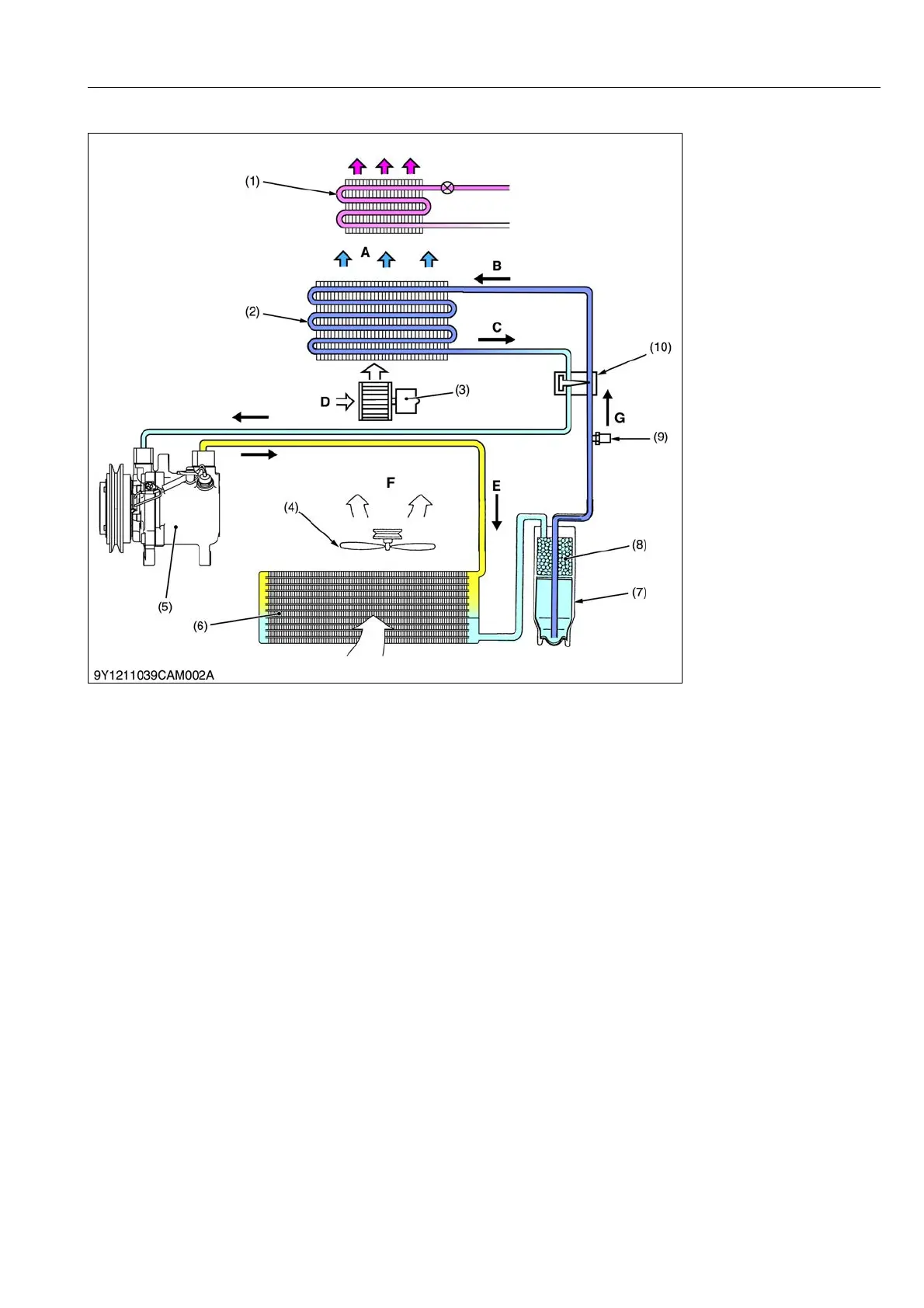CABIN
B2050, B2350, B2650, B3150, WSM
10-M3
[2] AIR CONDITIONING SYSTEM
The cooling system for this air conditioning device is as follows.
1. Refrigerant in gaseous state that has passed through and vaporized in the evaporator (2) is compressed to
approximately 1.47 MPa (15 kgf/cm
2
) by the compressor (5). Here, the temperature rises to approximately 70 °C.
Refrigerant in this state is sent to the condenser (6).
2. The gaseous refrigerant passes through the condenser (6) and is cooled to approximately 50 °C, changes from
a gas to a liquid, and is sent to the receiver (7).
3. Refrigerant collected in the receiver (7) is stored for supplying of refrigerant based on the air conditioning load.
Also, desiccant (8) is enclosed in the receiver and this separates out water in the case that there is water in the
refrigerant.
4. Next, liquid refrigerant is sent to the expansion valve (10). The refrigerant is sprayed in an atomized state into the
evaporator (2) through the small hole in this valve. This cause the pressure and temperature of the refrigerant to
drop enabling vaporization of the refrigerant.
5. The refrigerant actively vaporizes through collecting heat from the surface of the evaporator (2) pipes.
6. Here, the heat from air pulled into the evaporator using a blower motor (3) is collected by vaporization of the
refrigerant. The inside of the cabin is cooled through discharge of this air into the cabin.
(Remarks)
• Air that passes into the evaporator is rapidly cooled so water contained in the air is condensed. In other words,
this enables dehumidification of the cabin.
• Air that has passed through the evaporator is separated into air that enters the heater core (1) and air that does
not enter by an air mix door. In other words, the air can be discharged into the cabin at the desired temperature.
• Refrigerant that has been vaporized in the evaporator (2) is returned to the compressor (5), is again compressed
and changed high temperature high pressure gas.
9Y1210982CAM0002US0
(1) Heater Core
(2) Evaporator
(3) Blower Motor
(4) Engine Cooling Fan
(5) Compressor
(6) Condenser
(7) Receiver
(8) Desiccant
(9) Pressure Switch
(10) Expansion Valve
A: Cooled air
B: Low pressure/low
temperature gas-liquid
mixture (mist) refrigerant
C: Low pressure/low
temperature gas
D: Air that has passed
through indoor/outdoor air
filter
E: High pressure/high
temperature gas
F: Vapor
G: Liquid

